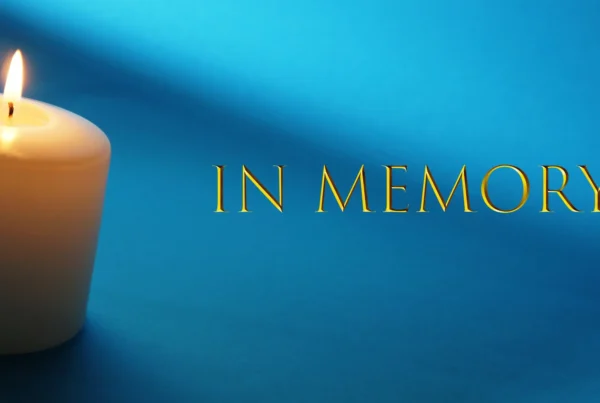Towards a manifesto for sport
in civic Scotland
By CHARLIE RAEBURN
(OSS Founder & Chairman)
In this final article in my recent series, which seeks to contribute to the idea of a manifesto, my concerns entwine community sport and civic society. All citizens deserve access to a variety of opportunities for their health, enjoyment, expression and to cultivate a sense of belonging to their own communities. Often it is through these voluntary activities and associated informal learning that a sense of citizenship (and collectively civic society) is developed.
My hope is that readers of this series feel encouraged to engage with the Observatory for Sport (OSS) which is working with people and organisations across Scotland to develop a 2021 manifesto for sport. If you would like to contribute to those discussions, contact OSS Director David Ferguson (david@oss.scot).
It is clear that the past ten years of austerity measures in Scotland have impacted heavily on community sport. The evidence is quite startling, in areas such as:
- The reduction of access, and increase in charges, to sports facilities and programmes;
- The abnegation of public policy responsibilities by creating arm’s length leisure trust models of delivery that are hamstrung by short-termism and ever-reducing government fiscal support;
- The evidence of traditional sport needing to learn to adapt and move with changing social and behavioural trends.
In the first major piece of independent research analysis produced by OSS (Sport Participation in Scotland: Trends and future prospects), our Head of Research Nick Rowe identified that Scotland was developing into a marked “divided sporting nation”; clear sporting ‘haves’ and ‘have nots’, separated by issues of opportunity and inequality. This intriguing analysis of the Scottish household and health surveys, looking beneath the general headline that our sport participation level has remained static at 53% for the past decade or more, revealed that we are seeing a growing number of people walking, cycling and going to gyms – which is great – but a reducing number of people, and families, doing any sport activity at all, separated often on socio-economic lines. That is a concern.
This was explored in detail for OSS by Professor Tess Kay, Head of Sport at the University of Stirling (Sport and Social Inequality), whose 2020 paper considered the impact of poverty and material deprivation on access to and involvement in regular activity. She concluded not only that it had a significant impact but that social inequality and deprivation was, in fact, the main cause of sport inequalities in Scotland. A renowned European researcher of inequalities, she stated that helping sport to address this more effectively would have widespread benefits on Scotland’s population health, youth and community, social care and education. Evidence of how sport is related to society.
So, can we look in more detail, perhaps with the other component activities of civic Scotland at developing a vision for a happier and healthier Scotland? Can we consider the policies and practices, research and analysis from Scotland and other countries?
I termed this final article in my series ‘Towards a manifesto for sport in civic Scotland’ because a manifesto offers the opportunity to bring people, their knowledge and intelligence, together in addressing the challenges, which is what the OSS is doing. It aims to stimulate discussion, with all views welcome as the OSS seeks to create a manifesto to help all involved in sport from 2021.
So, here is a starter for ten with some personal ideas from me of things to think about.
- Asset transfers of sports facilities to community groups. Good, bad or indifferent?
- The closure of facilities, sometimes initially on a temporary basis. Covid-19 has brought this into sharp focus as only a few hundred of 1400 local public facilities opened when given the go-ahead by the Scottish Government, due to lack of income, which includes community use of schools. We are told that at least 100 are unlikely to ever re-open.
- Restructuring of the management of sports facilities with empowerment and enablement of social enterprises, including volunteer community clubs, and shifting balance between professional employees and volunteers. The UK employs more people in sport than most global countries, and yet there is wide disparity between regions in Scotland. Within that we have to recognise the growth of informal recreation and play with “wheeled sports” such as BMX and skateboarding, as well as walking and climbing, martial arts and gymnastics. They all have key roles to play in Scotland’s future.
- Recognition of the importance of local provision by increasing cooperation between sports stakeholders and other community activities at local level, closely aligned to the 357 secondary school geographic catchment areas. Such planning could be improved by evolving partnerships between sports and other parts of civic life viz. music and the arts, hobbies, faith groups, uniformed organisations.
- Focus on social inequality related issues. Planning for the future has to include improved access to sports and community opportunities to take account of poverty, age stages, and local interests/demands.
- Sport and recreation in the workplace, including company and employee schemes to boost health and wellbeing. Recent Japanese research into sport in workplace schemes for over 50-year-old employees demonstrated that sport was the main driver of increased productivity!
- ‘Senior Sport’, including the wide range of activity in sheltered accommodation and care homes; daytime “senior sports” (commonly for those aged 60 plus) and activity clubs; induction into fitness schemes.
- Acknowledging the very good examples. Scottish Sports Governing Bodies and their member clubs, and indeed all providers are asked and encouraged to review their “community offering”; length of seasons; types of events/ competitions/festivals; incorporation of family memberships within clubs to encourage participation by parents; and “associations” with other sports.
- There is an obvious need for government, national and local, to invest in research and innovation in sport/civic society, and to learn from effective policies and practices in Scotland and other countries. We need to understand the participation trends, the needs of all age groups, different settings (families/workplace/geographic), learn from what is working and what isn’t and, very importantly, to empower and enable the communities themselves to respond and take responsibility.
- Using research and analysis more effectively, community sport and civic society needs to innovate quickly. Innovation funding could support wider use of expensive capital facilities, to ensure these can be used 24/7/365, and by a wide range of organisations. Such innovations also include smarter use of ever-developing IT.
All of these ideas require local leadership to coordinate and develop, perhaps ‘locality regeneration officers’, and also corporate support through employee volunteering programmes. The German experience, for example, shows that there can be serious benefits from engaging the local and national corporate communities to examine and develop legal and financial advice to local and national organisations. In some German states the corporate community undertakes much of the training of volunteer staff.
Housing Associations too could be encouraged to become involved in this agenda in a variety of ways, as has been the case with street sports and play opportunities.
Finally, it is essential that the Scottish Government, and indeed local government play a strong leadership role in rebuilding, remodelling and refreshing community sport and the wider civic society. Currently, there are statutory requirements of local government for both ‘Wellbeing’ and ‘Adequate/Appropriate Facilities’ so it would be good to now review and strengthen those.
Hopefully, readers will consider these ideas and the background presented across this four-part series, and join the discussion, as the OSS develops its manifesto in coming months, to be shared with those who share my concerns about public policy.







Sport is the key to a healthy life whatever the age.It would save a massive amount spent on health care for all ages..It not only improves the body but is significant in mental health.All ages should participate in Sport and governments need to wake up to the finances of spending in sports it would be paid back in the reduction on the health service problems with overweight,diabetics heart problems to name a few